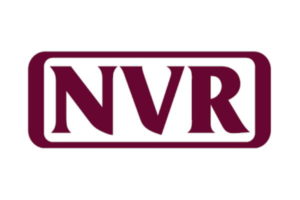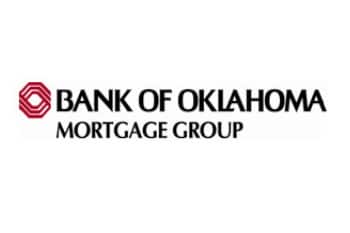Maria writes in with a great question:
I don’t understand why it is so hard to get ahead financially. We live in the most productive and prosperous era in human history. Why are almost all Americans living paycheck to paycheck? I mean, I get the easy answers like student debt and stuff, but why is this happening?
I’m going to give you a very simple answer: our brains aren’t wired for the modern, prosperous world. That is really what it comes down to. Our brains simply aren’t wired for much of what the modern, prosperous world provides for us. For the vast majority of people, getting ahead financially requires willpower, intense self-reflection, long-term habit building (which either rests on willpower or on how you were raised), and/or a lot of luck, because we’re working against how our brains are wired.
Throughout virtually all of the roughly two million years of human existence, the humans that have survived and thrived were ones that could survive with a hunter-gatherer lifestyle. The period of time in which the world might be described as anything like the modern world has been extremely short by comparison, a few hundred years at most.
When you take a deep look at how our brains are wired for survival as hunter-gatherers, scavenging for our next meal and avoiding immediate threats, it shouldn’t be surprising that the types of instincts and responses that helped us then are actually working against us now.
I’m going to stick to several such instincts, discussing how they worked for us then, work against us in terms of personal finance success now, and what we can do to overcome them.
Short Term Outlook
To put it simply, unless the benefits are incredibly obvious and incredibly strong, our brains almost exclusively react in terms of what creates the best life for us in the short term future, not the long term. For us to worry about things beyond the next week or two, we have to be shown that something is overwhelmingly beneficial long term or that it’s overwhelmingly costly long term and should be avoided.
Things like skipping a short term pleasure because it will mean a small amount more in a retirement account in thirty years isn’t enough for most people. This is why most people don’t save for retirement, or if they do, it’s a pittance, usually done to make someone else happy. The number of people who save significantly for retirement is surprisingly few, particularly when you get far away from retirement.
This is true for almost all long term goals. For example, most people choose to eat an unhealthy diet instead of a healthy one because short term flavor and convenience trump long term health. The short term benefits – flavor, mostly, with a bit of convenience, too – outweigh the much greater long term costs. It’s why most people don’t exercise – the short term benefits of not exercising (free time, not having to exert oneself) aren’t enough, in the minds of most, to outweigh the long term health costs of not exercising.
What can we do about this in terms of finances?
Focus on short term rewards of frugal behavior. We have to find habits and routines in the short term that cost less without providing much less short term pleasure than the more expensive options. Again and again, people will spend their money on things that provide short term rewards, even if the long term costs are disastrous.
A great example of this is going to the library. I already love reading books, so it is very tempting to go to the bookstore and spend a lot of money. Going to the library is a very good substitute for this, as I can walk through the halls of either one and walk out with an armload of books to read. Recognizing that I should really only buy books that I will read several times means that I only shop for books that are intended for multiple reads or for reference. A library usually has more choices than a bookstore and it doesn’t cost me anything to grab several of them.
Another example of this is going on a walk. It costs nothing, it feels good for a variety of reasons (time outside, your body is moving around, sunshine, endorphins at the end, etc.), and you often feel really good afterwards, especially if you have a daily step count goal.
Automate long term behavior during moments of clarity. Whenever you’re in a mindset where you can really see the long term benefits of financial success, that’s the moment in which you should set up some automation or take on a big one-off frugal project.
For example, you might sign up for the 401(k) at work or bump up your contribution there, sign up for a Roth IRA with an automatic contribution, set up an automatic transfer to a savings account each week to build up an emergency fund, or automate an extra debt payment through online bill pay.
On the frugal side of the coin, you might do something like switch to a programmable thermostat, air seal your windows, put a weather strip on your door, or make a whole bunch of meals to store in the freezer.
Focus on the short term benefits of making long term financial progress, especially less stress. One of the most surprising benefits of long term financial success that I didn’t really expect was the loss of background stress in my life. I didn’t realize it at the time, but living a paycheck to paycheck lifestyle was contributing a lot of low-level stress to my life. It made me worried to check the mail. It made me extra stressed about my job. It made me worried about every little expense, that I’d forget about something and overdraft my checking account. That stress added up and it made my life less pleasant.
As I began to make real financial progress, all of that background stress gradually melted away. It made my day to day life a lot better in the process.
It turns out there are lots of little benefits to financial success that are wonderful in the short term. I don’t feel handcuffed to my job and if I became unhappy with it, I could move on without much worry at all. I could even switch careers entirely without much worry. I don’t worry about things like my car breaking down, and even if it did happen, I could handle it. These little stresses – and so many more – no longer register for me.
Obsessively Seeking Fleeting Pleasure
When we were hunter-gatherers, we needed to be wired to obsessively focus on and desire things like finding food and finding fresh sources of water. We needed to desire those things intensely and feel a huge burst of pleasure when we found them, because we needed those feelings for motivation to actually do the work to keep ourselves alive. We’d obsess over the taste of berries or, if we were really lucky, meat, and the taste of fresh water… mmmm.
Yet, when we have those things, we swallow them down quickly, feel full for a bit, and then they’re forgotten. Soon, we’re craving another fleeting pleasure.
That phenomenon of strong temptation leading to a fleeting pleasure leading to the pleasure quickly vanishing leading to a desire to find that pleasure again as an endless cycle hasn’t gone away, as almost everyone knows. We all do it, with the foods we crave, the little splurges we give ourselves, and so on.
This is why so many stores these days have a coffee shop right at the entrance, selling overpriced coffee-flavored beverages and pumping out an attractive aroma. Those places know that a fair number of people on their way into the store are seeking a little treat for themselves and so those shops hijack that normal cycle of pleasure seeking that all of our brains go through and use it to extract money straight from our wallets.
How do we fight this cycle?
Reflect on how you feel about perks a week or two after enjoying them. Sometimes, you simply have to show your brain over and over again that the brief pleasures that it constantly seeks and desires really aren’t all they’re cracked up to be. Over time, you can hijack that instinct a little and learn that if you’re dumping resources into something that’s really fleeting, it’s not going to result in an overall good outcome for you.
Every few months, I sit down with my credit card statement and intentionally review everything on it, purposefully looking for expenses that are basically expenses done to give me a burst of pleasure. I bought some item, or I indulged in some food or drink, or something like that. Do I even remember this expense? Often, I don’t. If I do, was it really worthwhile? Often, it wasn’t. The situations where it was worthwhile are usually ones where there was a social element or the purchase was planned out in advance. Almost every spur of the moment expense is one that I look back on with regret, as it was just me seeking a brief burst of pleasure.
The thing is, you can find those little fleeting blips of pleasure in all kinds of free things, so find lots of free things in life that will provide that little blip. That way, your mind, when it’s instinctively seeking out a little taste of pleasure, doesn’t just instinctively open the wallet. I have a huge repertoire of these little pleasures, from things like sitting for an uninterrupted hour to read a book I love or going for a walk in a park or drinking some really cold water (I keep refillable water bottles in the fridge near the air vent so that they’re verging on freezing).
Make it harder to seek costly fleeting pleasures. Another good way to stop the routine of spending money for fleeting pleasures is to simply not take money with you when you leave the house. Just leave your credit cards at home. If you do want to have some money, take a small amount of cash with you, but no credit or debit cards. That way, you’re cut off from tossing money at unplanned expenses due to pleasure seeking and instead you have to look for extremely low cost or free things to do.
In the same vein, delete your credit card information and other payment information from online retailers. Again, this prevents you from operating on impulse. This forces you to think for a little bit longer before exchanging money for that brief burst of pleasure.
Try to achieve contentment at home before shopping. If we feel good about things before we leave the house, we’re less likely to want to seek some sort of pleasure when outside of the house.
This is why it’s a good idea to prepare a grocery list then eat something before going to the grocery store. With a full belly and a grocery list in hand, we’re much less likely to throw incidental items into the shopping cart.
It’s also a good idea, if you enjoy coffee, to make yourself some coffee at home in a to-go mug so that you’re far less tempted to spend $5 or more at that coffee kiosk. It’s far better to spend $0.60 at home on a big cup of homemade coffee than $5 at that kiosk.
Poor Reward Assessment
Reflect explicitly on the downsides of unnecessary things you spend money on. In other words, if you follow the previous tip of reflection on how you feel about perks a week or two afterwards, you’ll likely recognize some negative things about those perks.
That fast food treat was probably atrocious for your long term health, as was that sugary coffee. That tech gadget you really wanted didn’t really add up to the life change that you thought it would and now it’s just sitting there gathering dust. Those new clothes didn’t give you a big self confidence boost and now they’re just jammed in the closet with other clothes and now the other clothes look shabby and you feel like you should replace them, too. All of that alcohol left you feeling like crap the next day and a little flabbier around the midsection. And all of these things cost money, denying you other opportunities.
Maybe that pleasure burst wasn’t all it was cracked up to be.
Look at where you can get many of the same upsides without the downsides (or with much fewer downsides). Obviously, you wanted some kind of upside when you sought that pleasure. What other things can you do that provide that pleasure with fewer downsides, especially monetary but in other regards, too?
Rather than gobbling down fast food, maybe have a couple of healthy granola bars in your bag so you can much them when you get the munchies. They’re healthier and cheaper. Even better, keep a water bottle with you, as drinking water can definitely take the edge off of hunger for a while while also keeping you hydrated.
Rather than buying that tech gadget without really thinking about it, consider seeing if you already have devices that do the same thing, or if a friend has a device that you can borrow. It’s a lot cheaper to borrow a friend’s Switch and play it heavily for a few days, then put it aside for a week, and then just return it to that friend.
Rather than buying new clothes at the expensive shops, trawl some secondhand stores for bargains or, better yet, just dig through your closet, bring stuff from the back to the front, and wearing those newly discovered things.
Rather than going to a bar and getting plastered, invite some friends over to play cards, ask them each to bring a bottle or a six pack, and buy some cheap drinks and snacks from a warehouse club.
You’re cutting out a lot of downsides with each of these choices, including costs, while retaining most of the upsides.
Find pleasure in free things so that the relative expense of costly things is clearer. Again, as I noted earlier, try to cultivate a bunch of free things that you enjoy doing so that you can draw upon that list whenever you feel the impulse to seek a bit of pleasure. My default ones include just kicking back with a book for an hour or going on a hike or playing a board game or eating an apple or drinking some cold coffee.
Imitation of Others, Particularly Those That Appear Successful
One of the most successful strategies that humans used in the early days of our history was imitation. If someone had a good technique for acquiring food or water, you were usually doing the right thing to imitate that technique. Imitation was a great survival strategy.
Today, we still instinctively imitate, but we’re surrounded by examples of behavior that isn’t necessarily going to help us build the best life. People around us constantly exhibit bad financial and personal behavior and we’re instinctively driven, at least to an extent, to imitate it. We see beautiful or interesting people on television and strive to imitate them. We see the neighbors doing affluent things and want to imitate them. Often, such behaviors are very financially destructive and not helpful in other areas of life either.
Here are some great strategies for combating imitation.
Cut down on media consumption It’s simple – just watch less television and spend less time online. Find other things to do, particularly things that involve making or creating rather than consuming. If you do want to just consume something, read a book or watch a stage production. Basically, avoid screens.
Media in all its forms offer deep misrepresentation of how other people actually live their lives. Television programs and reality shows offer scripted versions of reality that don’t represent real life in any way. Social media shows only the highlight reels of people’s lives, not showing you the struggles they are going through. They’re terrible sources for imitation, but if you look too much, you’ll subtly strive to imitate.
Spend less time with people who exhibit and encourage poor financial behavior. The people in your lives are also sources for imitation, so actively aim to spend less time with people who exhibit poor financial behavior and encourage you to do the same.
Do you have friends that seem to always have expensive things and don’t hesitate to spend money? It might feel fun to spend time with them and try to imitate that behavior, but the reality is that it leaves your own house in financial ruin.
You don’t need to de-friend or “ghost” these people. Just consciously dial down your time with them and your exposure to them on social media.
What can you do socially instead?
Spend more time with people who exhibit good financial behavior. In other words, look for good people to subconsciously imitate. Hang out with people who love to have potluck dinner parties or go to free community concerts or have game nights at each other’s homes. Look for friends who want to go on camping trips instead of expensive getaways, or spend the day at the beach instead of a private club. Look for friends who have hobbies that can be done for free rather than hobbies that require expensive fees to even participate. Look for friends who do things for fun, not buy things for fun.
It can be tricky to find these friends, especially if that’s not like the people in your social circle, but look around carefully and you might find that they’re already there. If not, make a conscious effort to expand your social circle in new directions. Do things like going to meetups or other community events with the goal of meeting people.
You’ll soon learn that you don’t have to constantly spend money to imitate friends or keep up with the Joneses.
This Isn’t the Default
It’s important to remember that the financially smart alternatives to instinctive human behavior discussed in this article are not the default choices most people make. If they were, we wouldn’t live in a world where 80% of Americans live paycheck to paycheck. We wouldn’t have a culture often centered around the endless promotion of the latest and greatest thing. We’re wired for those behaviors because they were incredibly successful in the hunter-gatherer world that humans lived in for hundreds of thousands of years, even though they’re rather self-destructive in the modern world that humans have lived in for perhaps a hundred years.
Work hard to change that. Work to rewire your instincts and provide a good imitation model for the people around you. Not only will this improve your own life, it causes the behaviors to spread via imitation, often in surprising subtle and indirect ways. Choose people in your life that also show an inclination for smart financial choices.
You’ll find that, although it’s tough, it is quite possible to work against your instincts to build a better life, and over the long run, the people who succeed at that will be the ones that set the mold for future generations.
Good luck.
The post Financial Struggle and Human Instinct appeared first on The Simple Dollar.

Source The Simple Dollar https://ift.tt/2zcpZMQ

 To guarantee the best mortgage rate possible, borrowers need to be aware of the various factors that determine what lending terms
To guarantee the best mortgage rate possible, borrowers need to be aware of the various factors that determine what lending terms  There are many different factors that impact mortgage and refinancing rates in Delaware. It is important to learn more about how these different elements influence rates, because even small differences can result in savings of several thousands each year for Delaware borrowers.
There are many different factors that impact mortgage and refinancing rates in Delaware. It is important to learn more about how these different elements influence rates, because even small differences can result in savings of several thousands each year for Delaware borrowers. There are times when working with a specialized lender can pay off for a home buyer. NVR Mortgage fits the bill in this way, as its loans are accessible exclusively to home buyers purchasing from partner organizations Ryan Homes, Heartland Homes, and NVHomes.
There are times when working with a specialized lender can pay off for a home buyer. NVR Mortgage fits the bill in this way, as its loans are accessible exclusively to home buyers purchasing from partner organizations Ryan Homes, Heartland Homes, and NVHomes. Bank of Oklahoma (BOK) can trace its roots back to The Exchange National Bank of Tulsa, which was founded in 1910. The bank changed its name in 1975 and moved its headquarters to a larger facility in Tulsa, Oklahoma, where it resides to this day. Bank of Oklahoma is an owned subsidiary of BOK Financial Corporation, which was acquired by George Kaiser in 1991 from the Federal Deposit Insurance Corporation. BOK Financial operates seven banks with physical branches in eight U.S. states.
Bank of Oklahoma (BOK) can trace its roots back to The Exchange National Bank of Tulsa, which was founded in 1910. The bank changed its name in 1975 and moved its headquarters to a larger facility in Tulsa, Oklahoma, where it resides to this day. Bank of Oklahoma is an owned subsidiary of BOK Financial Corporation, which was acquired by George Kaiser in 1991 from the Federal Deposit Insurance Corporation. BOK Financial operates seven banks with physical branches in eight U.S. states.